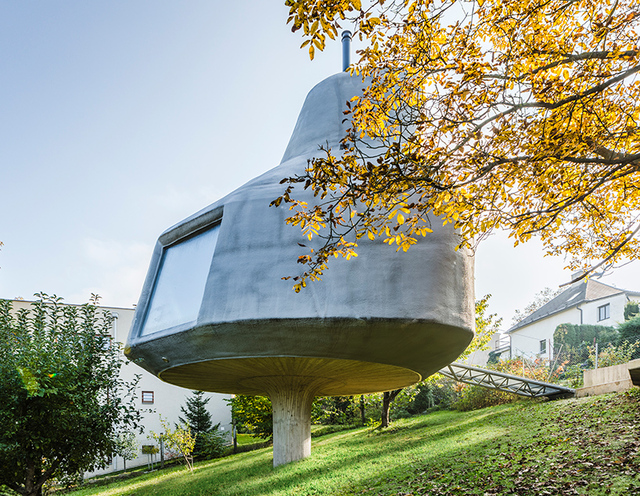Perched atop narrow pillars or isolated cliffs, single-pillar structures defy gravity and spark awe. These architectural marvels, found across the globe, are not just feats of engineering but also carry deep spiritual and cultural stories. Each structure invites us to explore the balance between human ambition and nature’s grandeur.
Why Build on a Single Pillar?
The decision to construct a building on a single pillar is often rooted in cultural, historical, and practical reasons. In some cases, these structures served a spiritual purpose, representing the connection between heaven and earth. For others, the isolated location of the structure provided a sanctuary for meditation, reflection, or even defense.
Religious and sacred contexts frequently inspired single-pillar architecture. Many such buildings were created to signify humility and spiritual elevation. Their narrow bases often symbolized the fragility of life, balanced with the strength of faith or purpose. In medieval times, elevated structures were also practical as defensive positions, providing protection from invading forces.
However, creating such buildings was no small feat. Architects and engineers had to overcome challenges of stability, weathering, and access. These buildings, precariously perched on their unique foundations, demonstrate human ingenuity at its finest.
Iconic Single-Pillar Structures Around the World
Across the globe, single-pillar structures showcase the diversity of architectural styles and cultural significance. Here are some of the most iconic examples:
1. The Katskhi Pillar, Georgia

Standing 40 meters (130 feet) tall, the Katskhi Pillar is a limestone monolith in Georgia that supports a small Christian church. Built centuries ago, it has long served as a hermit’s retreat for monks seeking solitude. Even today, monks climb a rickety ladder to maintain the church and its spiritual traditions. The Katskhi Pillar’s striking presence amidst lush Georgian landscapes makes it one of the most breathtaking single-pillar structures in the world.
Video:
2. The Hanging Temple of Xuankong Si, China

While not exclusively reliant on a single pillar, the Hanging Temple in Shanxi Province, China, incorporates wooden beams embedded into a cliffside, creating the illusion of a suspended structure. Built over 1,500 years ago, this temple blends Buddhist, Taoist, and Confucian elements, reflecting religious harmony. Its precarious design demonstrates the ingenuity of ancient builders, who chose the cliffside location to protect the temple from floods.
Video:
3. The One Pillar Pagoda, Vietnam

Hanoi’s One Pillar Pagoda is a Buddhist marvel constructed in 1049 during Emperor Ly Thai Tong’s reign. Inspired by a dream, the pagoda symbolizes a lotus flower rising from the water. Supported by a single stone pillar, the wooden sanctuary appears to float above a serene pond. The structure represents enlightenment and resilience, drawing visitors who admire its simplicity and spiritual significance.
Video:
4. The Holy Trinity Monastery, Greece

Located in the Meteora complex, the Holy Trinity Monastery is perched atop a narrow rock pillar. Built in the 15th century, it was originally accessible only by rope ladders and pulleys, providing safety and solitude for its residents. Over time, stairs were carved into the rock, allowing easier access. Today, the monastery is a UNESCO World Heritage Site, celebrated for its spiritual legacy and stunning location amidst the Greek countryside.
Video:
5. The Cliff House, Italy

Modern architecture has also embraced the single-pillar concept, with the cliff house in Italy serving as a striking example. Perched atop a narrow rock formation, the house seems to defy logic, standing isolated yet harmonious with its surroundings. Though abandoned today, it remains an architectural wonder, embodying the delicate balance between human ambition and nature’s enduring strength.
Video:
6. The Saint Michel d’Aiguilhe, France

Built in 962 AD atop a volcanic needle, the Saint Michel d’Aiguilhe chapel in Le Puy-en-Velay, France, stands as a spiritual and architectural marvel. The structure is accessible via 268 steps carved into the rock, reflecting the devotion of pilgrims who visit. With its exquisite frescoes and dramatic setting, the chapel symbolizes the ascent toward enlightenment and remains a significant site of religious pilgrimage.
Video:
The Challenges of Single-Pillar Constructions
Constructing buildings on single pillars presents significant challenges, both historically and in modern times:
- Structural Stability: Balancing weight distribution, material strength, and environmental factors is critical. Builders must account for wind, earthquakes, and erosion, which can threaten the integrity of the structure over time.
- Accessibility: Many single-pillar structures were deliberately designed to be difficult to reach, ensuring protection or solitude. However, modern accessibility requirements often clash with these original purposes.
- Material Limitations: Ancient builders relied on locally sourced materials like stone and wood, while modern constructions incorporate reinforced concrete and steel. Despite technological advancements, the principles of balance and harmony remain essential.
- Preservation Efforts: Single-pillar structures are vulnerable to natural and human-made threats. Preservation requires a blend of traditional craftsmanship and modern technology, as well as support from organizations like UNESCO.

The Enduring Fascination with Single-Pillar Structures
Single-pillar structures captivate the imagination, offering glimpses into the creative and spiritual aspirations of their creators. Their precarious positions and awe-inspiring designs challenge perceptions of what is possible, symbolizing the human drive to reach new heights—literally and metaphorically.
These structures remind us of the delicate balance between human ambition and the forces of nature. They are testaments to resilience and creativity, telling stories of faith, ingenuity, and perseverance. Whether ancient chapels or modern architectural experiments, single-pillar structures connect us to the enduring spirit of exploration and innovation.
Conclusion
Single-pillar structures stand as timeless icons of human ingenuity and resilience. Their beauty lies not just in their breathtaking designs but in the stories they tell of faith, creativity, and perseverance. As these wonders continue to inspire, they remind us that even the most isolated creations can connect us to something greater.
